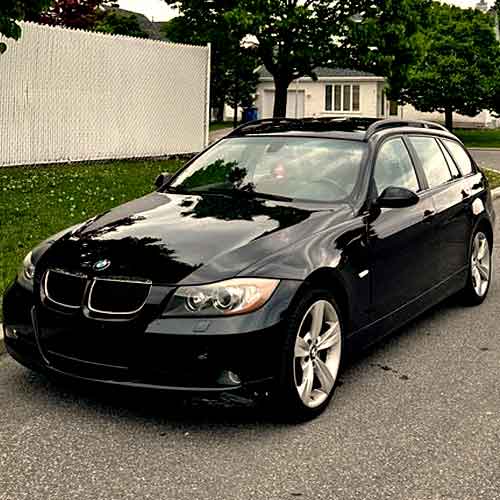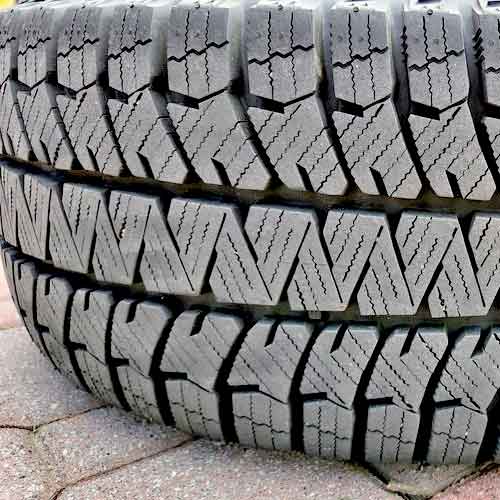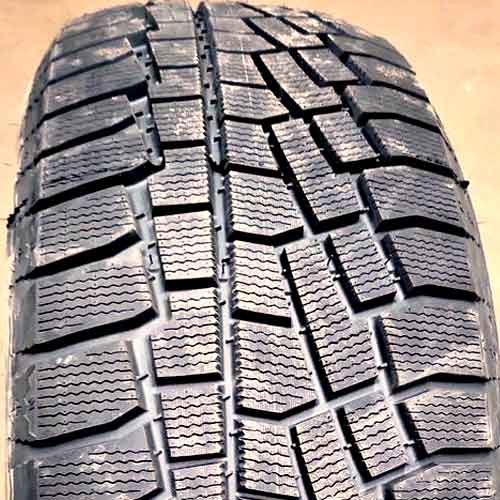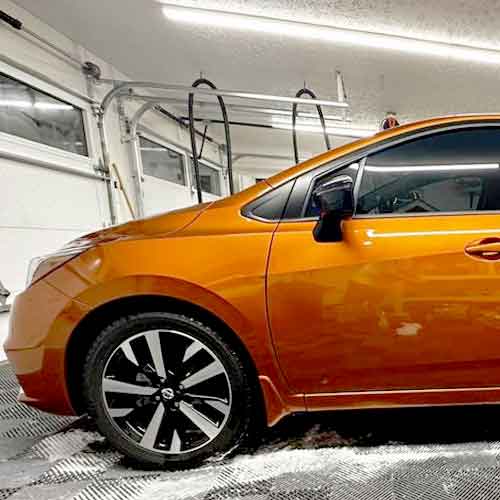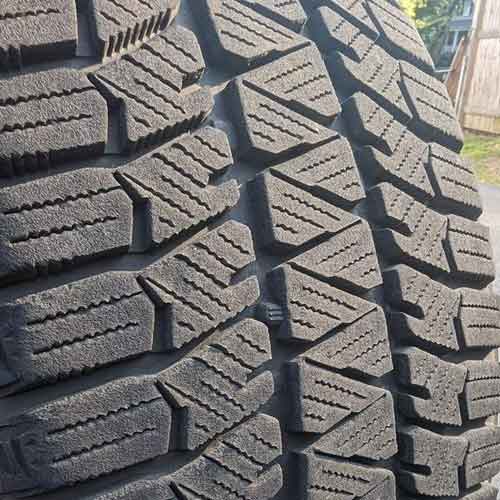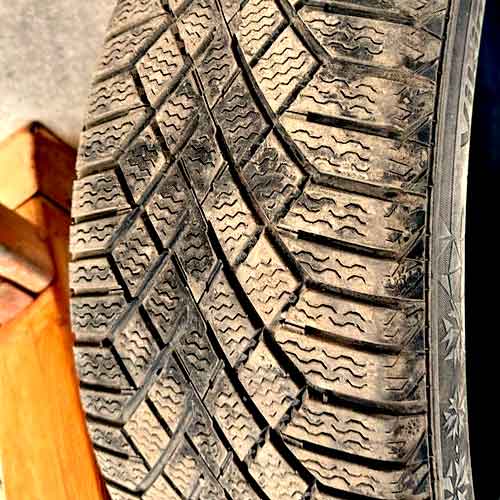Winter driving challenges even the most seasoned drivers. Will the impressive siping technology and enhanced snow traction of the Goodyear WinterCommand Ultra stand up to the multi-cell compound and optimized footprint of the Bridgestone Blizzak WS90? Let’s find out.

Tire Sizes
The Goodyear WinterCommand Ultra comes in 15 to 18 inches with following.
- Speed ratings: H only.
- Load ratings: SL and XL.
- Tread depth: 11/32″ on all.
- Weight: 18 to 28 lbs.
Review this tire in greater detail: https://snowytires.com/goodyear-wintercommand-ultra-review/
On the other hand, the Bridgestone Blizzak WS90 offer 52 total sizes in 15 to 19 inches (wheels) with following specs.
- Speed ratings: T or H.
- Load ratings: SL or XL.
- Tread depth: 11 or 12/32″.
- Weight: 17 to 29 lbs.
Review this tire in greater detail: https://snowytires.com/bridgestone-blizzak-ws90-review/
Tread Appearance
The Bridgestone Blizzak WS90 distinguishes itself with its robust and meticulously designed directional tread pattern. Allow me to delve into its intricate details.
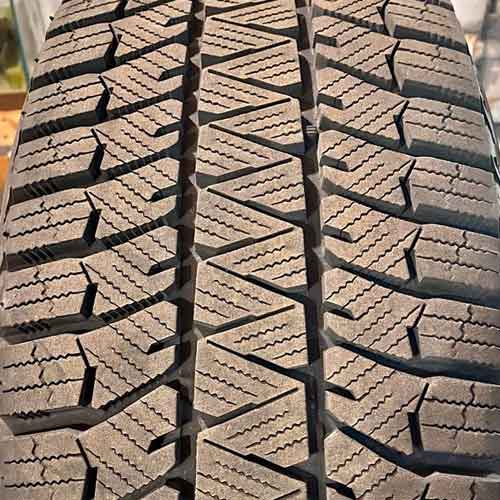
At first glance, one can observe three pronounced ribs on the tread, where the middle (most) rib stands out, with its, you can say, continuous, unbroken structure, devoid of conventional blocks (you mostly see).
This central rib presents numerous intriguing features. And starting with the most evident one, it sports an abundance of wave-like siping.
Additionally, it incorporates lateral slits that thicken as they extend towards the edges, connecting with the V-shaped outer notches.
These dual-facing V shaped notches, provide great longitudinal traction, as they are facing both sides.
The remaining two ribs host the shoulder lugs, which while may appear bisected, they aren’t entirely so, due to their slits’ limited depth, so consequently, they function as in-groove biters.
Furthermore, these ribs also encompass biters facing laterally, so their notches directed towards the central rib.
And yes, complementing these features are the zigzag longitudinal slits, found towards the edges of the tire.
On the other hand, Goodyear WinterCommand Ultra also features a 3 rib design.
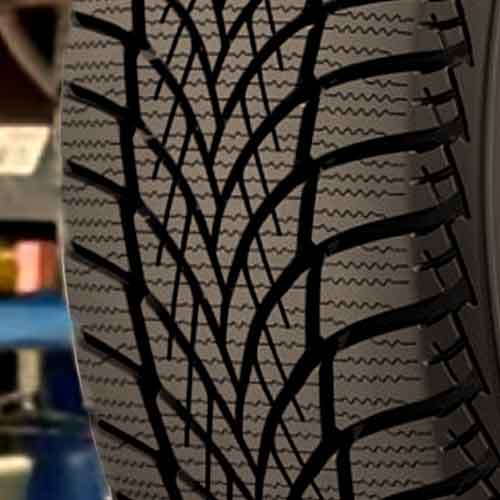
In the center, the lugs may appear divided, but since these incisions aren’t full depth, they are identified as in-groove notches.
These lugs seamlessly connect with the incoming blocks, resulting in a V-shaped design.
In addition, these blocks are adorned with a wealth of laterally arranged, interlocking sipes.
Furthermore, you can observe numerous in-groove biters, and it’s clear to see how the lugs are separated by curving lateral grooves as well as longitudinal channels that bisect the shoulders.
Speaking of which, these shoulder blocks are the biggest. And they present sharp chamfered edges, yet maintain a siping pattern similar to lugs in the middle.
And yes, worth reminding, you can see unique T-shaped biters at the at the outer edges (sidewalls, you can say).
Snow Performance
When it comes to fluffy snow, although both tires are pretty impressive, the Goodyear WinterCommand Ultra still gets to have the upper hand.
And looking at its tread it makes sense. The tire features much wider tread voids, and in-groove notches which trap in the snow particles.
This basically allows for ground contact with the lodged snow (in the tread voids). And its better significant, as snow stick better on snow, compared to tread’s rubber.
Moreover, the tire also features swooping V shaped lugs, which provide better snow scooping abilities, throwing back thicker snow and creating forward momentum. This allows the tire to have slightly better acceleration times in comparison.
Bridgestone Blizzak WS90 on the other hand, shows up with smaller braking and handling efficacy.
The tire is pretty closed up, with central most rib running continuously, and in-groove notches not having enough width to them.
And yes, although the tire has a directional tread pattern, it does not offer proper swooping arms like its competitor. And so its paddling abilities on snow are limited.
Ice Performance
When evaluated on icy conditions, the tables turn, with the Bridgestone Blizzak WS90 taking the lead, as the tests show its impressive 11 feet (on average) shorter braking distance, when compared to its counterpart.
And yes, same was seen in terms of acceleration abilities too, where the tire was 1 second faster (going from 0 to 40 mph).
The tire basically gets to offer a multitude of intricate biters spread across its tread.
It’s central rib is decorated with slanted incisions of varying widths, V-shaped notches (facing both directions laterally), and a lot of siping.
And yes, worth mentioning, all of these biters also have dual angles to them too, so you get epic biting efficacy out of them when it comes to packed up snowy terrains.
All of these features basically help the tire to achieve shorter braking distances.
While the shoulders, which offer superior handling times, feature biting edges in both lateral and longitudinal directions, promising improved grip from every angle. And here again, the sipes play a significant role with their two distinct angles too, just as seen on the lugs in the middle.
In contrast the Goodyear WinterCommand Ultra lacks a little with its larger tread voids, and less in number, notches.
For effective braking where central area of the tread is significant, the tire with wider lateral tread voids can’t seem to grip in the packed up ice.
Moreover, it’s missing multi-angles siping is not helping it a lot either.
Same goes for the handling area, where it’s missing notches don’t offer better handling times in comparison.
Wet Traction
Wet traction is primarily dictated by two factors: the design of the tread and the rubber compound used. And these elements influence two crucial aspects: grip and resistance to hydroplaning.
In terms of grip, both tires feature an abundance of siping and soft tread rubbers, so they do pretty great here. Though still the Blizzak WS90 still manages to take the lead.
This is because the tire offers the use of both rectilinear and interlocking sipes, which have superior water absorption capabilities, providing exceptional wet grip. Furthermore, their multi-angled structures enhance the tire’s cornering and braking abilities, especially when the sipes are parallel to the tire’s movement.
In contrast, the Goodyear WinterCommand Ultra, which primarily uses laterally oriented sipes, doesn’t offer the same level of overall traction. As a result, it generally produces longer wet braking distances and handling times.
Though, when considering hydroplaning resistance, which is an integral part of overall wet traction as well, the tire does pretty great.
Its V shaped lugs offer superior clearing of water, allowing for higher float speeds on average in both straight and curved aqua tests.
Dry Traction
Dry traction is determined by the tire’s overall contact with the ground, and its sub-categorized on two element, directional grip and lateral traction.
And in both these areas, the Bridgestone Blizzak WS90 takes the lead.
The tire’s central-most continuous running rib actually forms a great and consistent contact with the road, resulting in shorter braking distances and faster acceleration times in tests.
Though, when it comes to dry handling, the Goodyear WinterCommand Ultra outperforms its competitor.
Although both tires exhibit similar shoulder footprints, making contact with the surface, the WinterCommand Ultra manages to make more of its rubber come into contact with the road.
This is because it has minimal tread features compared to the WS90, which comes with numerous tread features such as lateral and longitudinal incisions.
Comfort Levels
The comfort level of a tire is generally influenced by factors such as road noise and the capacity to absorb vibrations.
These characteristics can vary depending on the tire’s construction, materials employed, the design of its tread, and the sidewall structure.
And here both tires perform equally great, I mean they both offer pretty smooth ride, cushioning bumps.
And they both are equally bald, and so offer similar noise reduction performance as well.
This is significant as noise gets generated when air particles strikes on the walls of the tread.
Fuel Economy
Fuel consumption is influenced by factors such as tire’s adherence to the surface, and overall tread pattern and considering these factors, one can see why the Blizzak WS90 offers a superior overall performance.
With longitudinally aligned central rib, its tread basically features a more streamlined design, that allows the tire to roll straight in a much better way.
On the other hand, on Goodyear WinterCommand Ultra, the directional tread pattern with lateral tread voids cause more hurdles for the tire as it maneuvers, producing greater overall rolling resistance, which then consumes more fuel.
This is because on this tire, lugs are more prone to flex/bend relatively, which then consumes, or you can say, wastes more energy.
In other words, energy is used in to molding of the blocks, instead of rolling the tire.
Conclusion
In a performance comparison between the two excellent winter tires, distinct advantages were observed for each.
The Goodyear tire excelled in fluffy snow due to wider tread voids and in-groove notches, alongside V-shaped lugs for superior snow clearing, and offered amazing capabilities when it came to lateral traction on dry roads.
Whereas the Blizzak WS90 offered superior icy traction, with its numerous biting edges and varied incisions, and provided much better braking and handling efficacy on wet roads.
Moreover, the tire also offered slightly better fuel economy too.
Though in terms of comfort, both tires are equally great.
